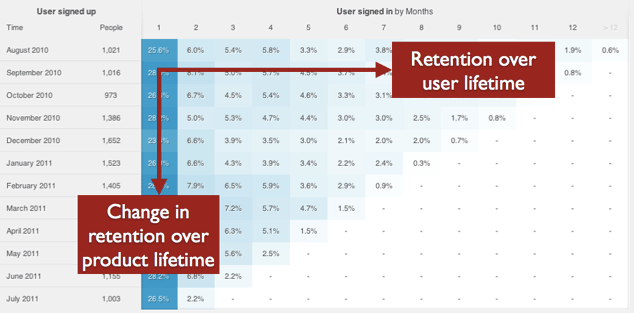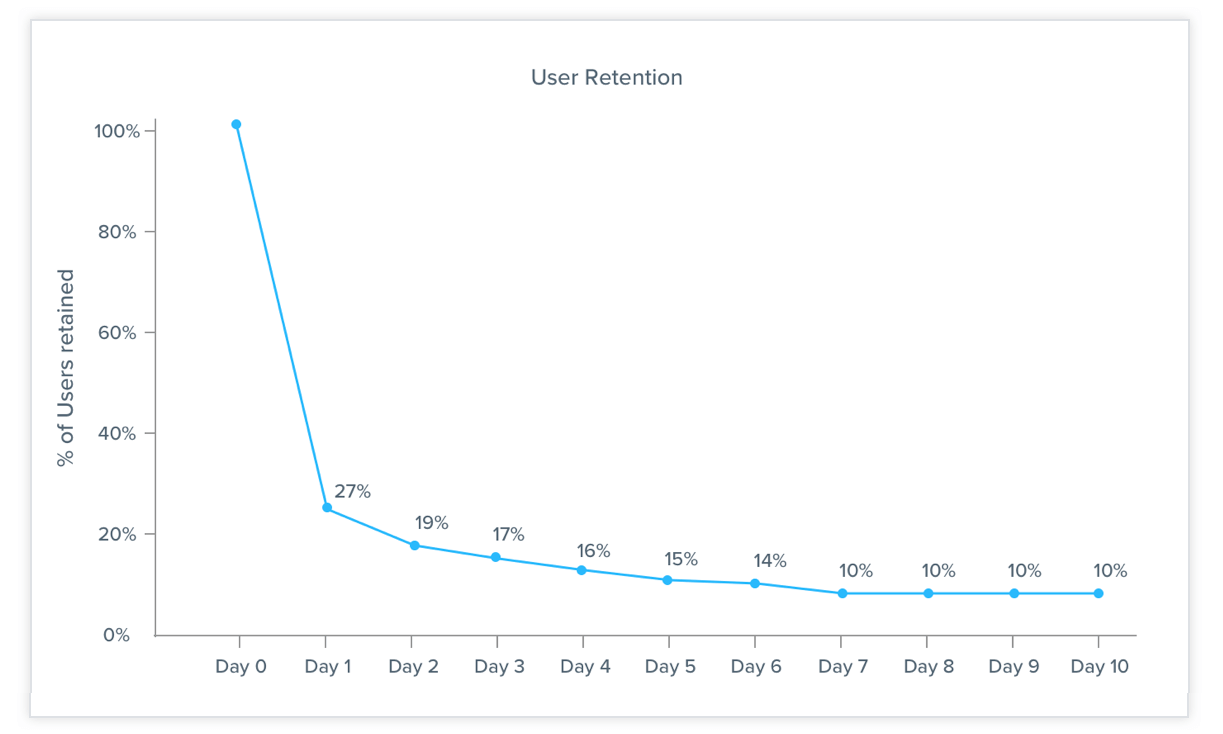A significant aspect of mobile app development is the strategy you put in place to drive awareness and acquisition. But more importantly, you need to identify the specific features of your product that keep active users coming back and form a retention strategy backed by those insights. While user acquisition may seem like a primary metric for gauging mobile app success, it doesn’t matter how many users download your app if they don’t stick around.
So, how do you find out precisely what makes users stay and what makes them leave?
While there are many tactics to improve user retention like optimized user onboarding and personalized marketing campaigns, successful user retention begins with a deep dive into data. This article explains how to track and interpret user actions to understand how people engage with your product after acquisition.
What is Mobile Analytics?
Mobile analytics is the practice of gathering and interpreting user behavior data from your app. From that data, you can verify user intent and make decisions to boost retention and maximize your app’s lifetime value. Keep in mind; mobile analytics techniques should be data-driven and straightforward.
Learn More: How to use data-driven reporting to answer critical questions about your users’ app journey
The key to a successful mobile app is your ability to convey the core value as quickly as possible; however, that can’t-live-without value proposition is built with careful analysis and iteration. To provide your users with a product they can’t live without, you can’t focus on vanity metrics like download numbers or daily active users (DAUs) and monthly active users (MAUs), for that matter, instead you should take a closer look at your product using a mobile app cohort analysis.
Mobile App Cohort Analysis Basics
Let’s start by establishing that a cohort is merely a group of users.
To perform a cohort analysis, start by grouping users based on mutual actions. Using a cohort analysis will help you make well-informed product decisions to combat churn and increase revenue. While running a cohort analysis, you will want to answer these questions:
- Which users are engaging and which users are not?
- When do users churn?
- Why do users lose interest?
You can segment users in two ways:
- Acquisition cohorts – Group users who signed-up for your app in the same timeframe.
- Behavioral cohorts – Group users who take mutual actions within your app in a specific timeframe (for example, the first week of use).
A mobile app cohort analysis is critical for revealing specific usage patterns because rapid growth can obscure metrics like DAUs and MAUs. If you’re acquiring large quantities of users, new signups will conceal where your DAUs and MAUs are dropping off.
Build a Retention Strategy with a Mobile App Cohort Analysis
With a mobile app cohort analysis, you will not only be able to see when users leave, but you’ll be able to understand why they leave your app and make data-driven decisions to fix it. Building a retention strategy can be broken down into several parts:
- Set your goals. What is your specific growth target? Are you creating a strategy for short-term or long-term?
- Use existing data. Take a look at the current data you’ve retrieved from your app and find areas for change.
- Brainstorm and hypothesize. Pinpoint the questions you want to ask and brainstorm all the possible scenarios from your experiments.
- Test, test, and test. Experiment with different tests to validate, or invalidate your hypotheses.
- Analyze. Examine your test data to see if you met your goal.
- Iterate. Make any necessary changes and begin testing again.
Pro Tip: When you’re building your retention strategy, you need to be looking at every stage of the user lifecycle, and employing different retention strategies for each stage. How fast do users realize the core value of your app? Are you able to retarget users and keep them coming back to your app repeatedly over time? How and when do retention metrics level out?
Acquisition Cohorts
So, you’ve launched your app and you notice that you have a churn problem, but you don’t know much else. Using an acquisition cohort allows you to see exactly where in the user lifecycle users drop off.
In the example above, the timeline runs along the left side of the chart; this is the number of users you’ve acquired in each timeframe. Each column in the chart shows the amount of time that has elapsed since a user signed up for your app. Every cell shows the percent of original acquisition that has been retained over that timeframe.
The easiest way to visualize this information is through a retention curve, which shows your app’s retention over time. Using a data chart like this makes it obvious when users are abandoning your app.
Just taking a quick look at this retention curve example, you can see something incredibly important: more than half of all users stopped using this app after day one. From this information, you can tell that users are not understanding your product’s value proposition fast enough. Naturally, you will want to fix this problem as soon as possible, but acquisition cohorts don’t provide any insight into why users are churning. This is where behavioral cohorts come into play.
Behavioral Cohorts
As soon as users sign up for your product, they make countless decisions and behaviors that all add up to their decision to continue using the app. Unlike acquisition cohorts, behavioral cohorts group users by the specific actions they take within an app and let you make quantitative decisions about which features drive the most retention.
For example, you will want to look at the retention rate for users who have enabled push notifications. While determining the link between behavior and retention is not entirely straightforward, the correlation will be more apparent when you look at very specific in-app actions. Again, by analyzing the data, you may find that users who churned did not enable push notifications. From here you can look at options to increase opt-in rates.
Recommended Reading: How to Use Mobile Push Notifications to Reduce App Churn
The primary focus for behavioral cohorts is looking at the way users engage with particular features. You can create endless combinations of actions to track within your app. Aside from push notifications, another area of interest could be users who interact with a social sharing feature. You can uncover many actionable insights from exploring these behaviors. You might learn that half of your user base churns in the first day, but only a quarter of users who use your social sharing feature churn in the same time frame. This simple analysis gives you the information you need to tailor your user experience towards using that particular feature. In turn, your retention will increase over time.
Improving Retention Over Time
As your mobile app grows, you will likely find that multiple features keep users engaged, and you will have to adjust your strategy to accommodate those changes. Once you’ve determined the core feature or features that make your app sticky, you will have to continually test and iterate methods of driving engagement. This doesn’t necessarily mean major product changes, rather A/B test modifications to get an idea of what’s working for your app. Using both acquisition and behavioral cohorts will help you make data-driven changes and minimize the overall risk of creating the adverse effect on retention.
Is your project ready for development? Understanding influential in-app actions and leveraging them to sustain user engagement and retention is only one part of the process. Download our mobile app development checklist to find out if you’ve covered all the bases. The list is the most comprehensive downloadable resource to evaluate development preparedness.







